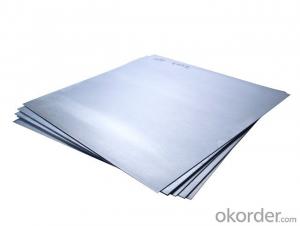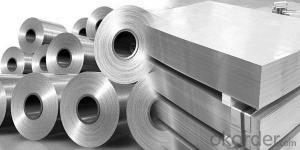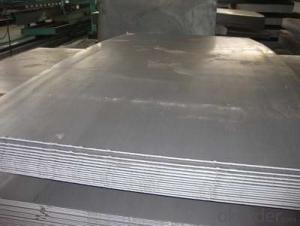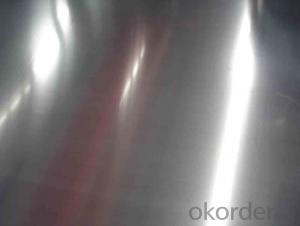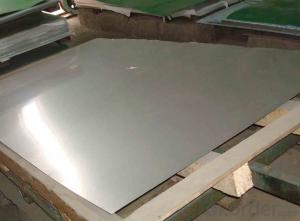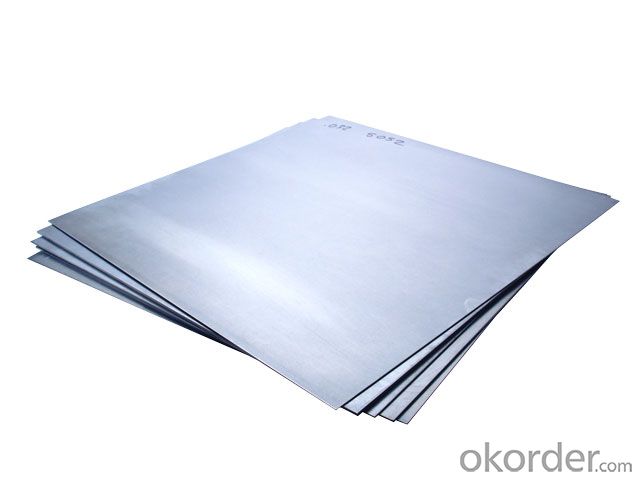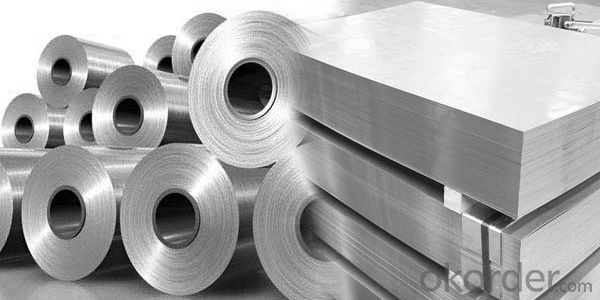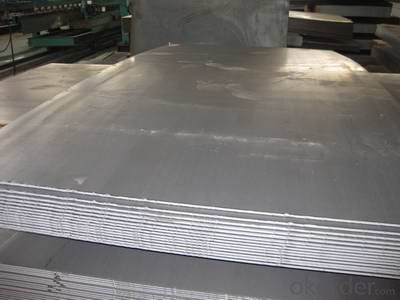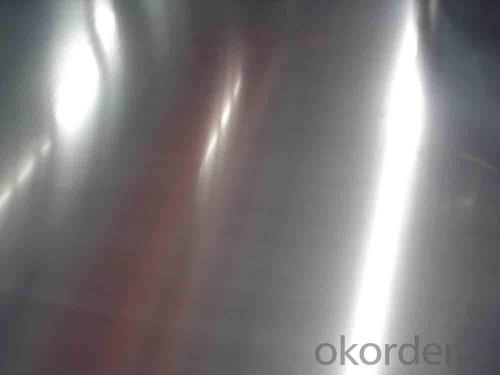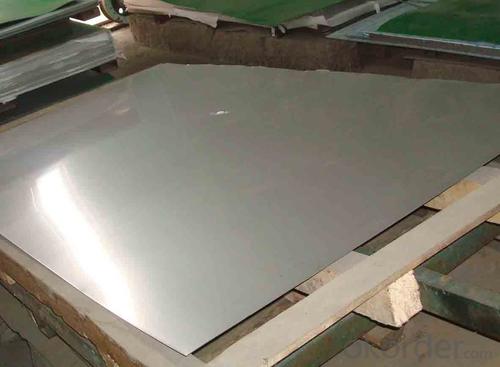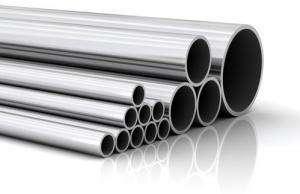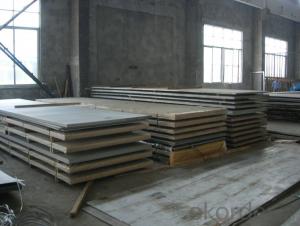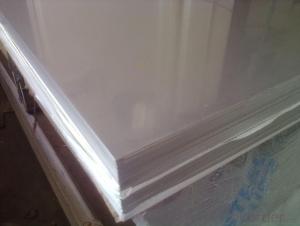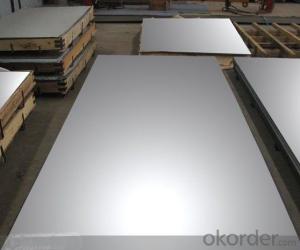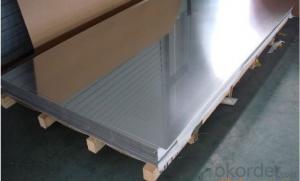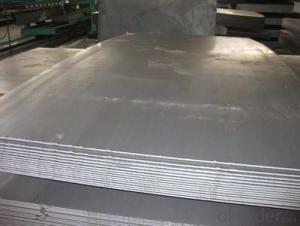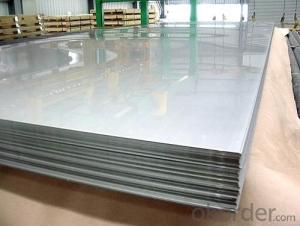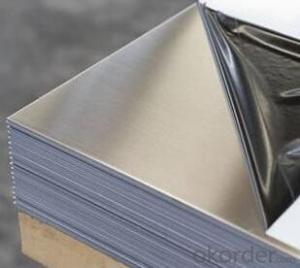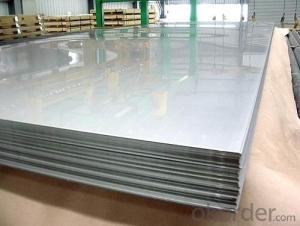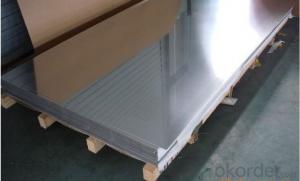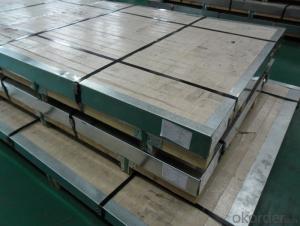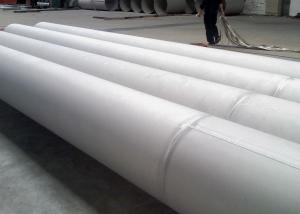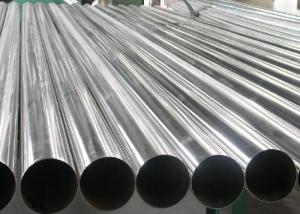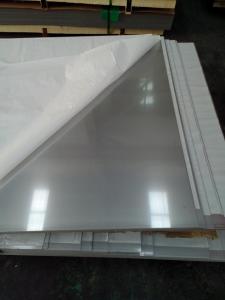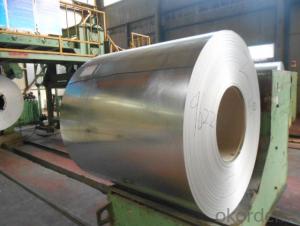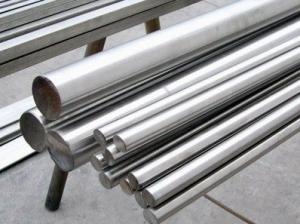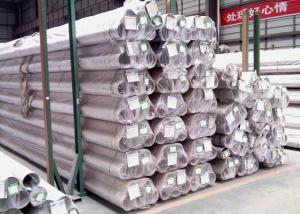Stainless Steel Plate 310S with No.4 Surface Treatment
- Loading Port:
- Shanghai
- Payment Terms:
- TT OR LC
- Min Order Qty:
- 500 m.t.
- Supply Capability:
- 5000000 m.t./month
OKorder Service Pledge
OKorder Financial Service
You Might Also Like
Hot sale stainless steel sheet 201/202/304/304l/310S/309S/316L/316Ti/316/316l/321,410/420/430/444/443/409L, and 904L.
Description of Stainless Steel Sheet:
Description | steel sheet,hot rolled steel sheet,cold rolled steel sheet, steel sheet,sheet,steel plate |
Standard | ASME, ASTM, EN ,BS,GB,DIN, JIS etc |
Application | Steel sheet applies to construction field, ships building industry, petroleum & chemical industries, war and electricity industries, food processing and medical industry, boiler heat exchanger, machinery and hardware fields. |
Packaging | Standard export sea-worthy packing |
Delivery time | 10-30 days |
Quality | No.1 |
Productivity | 500 tons/Day |
Note | Our company has cooperative relation between the domestic agents. Stainless steel sheet can be made accordingto the customers requirements. Fasten delivery. Quality assured. |
Contacts | If you have any question,please feel free contact me. |
Stainless steel sheet surface finish characteristics
Surface finish | Characteristics and application |
2B | The surface brightness and flatness of no2B is better than no2D. then through a special surface treatment to improve its mechanical properties,No2B could nearly satisfy comprehensive uses. |
No.1 | Polished with abrasive belt of grit#100-#200, have better brightness with discontinuous coarse stria, used as inner and external ornaments for building, electrical appliances and kitchen utensils etc. |
No.4 | Polished with abrasive belt of grit #150-#180,have better brightness with discontinuous coarse stria, but thinner than No3, are used as bathtub buildings inner and external ornaments electrical appliances kitchen utensils and food processing equipment etc. |
HL | Polished with abrasive belt of grit #150-#320 on the NO.4 finish and has continuous streaks, mainly used as buildings ornaments elevators, door of building, frontal plate etc. |
BA | Cold rolled, bright annealed and skin-passed, the product have excellent brightness and good reflexivity like mirror, kitchen apparatus, ornament etc. |
8K | The product have excellent brightness and prefer reflexivity can to be the mirror. |
Main Features of stainless steel sheet :
•Escalator, Elevator, Doors
•Furniture
•Production tools, Kitchen appliances, freezers, cold rooms
•Auto Parts
•Machinery and Packaging
•Equipment and Medical devices
•Transport system
Product Details:
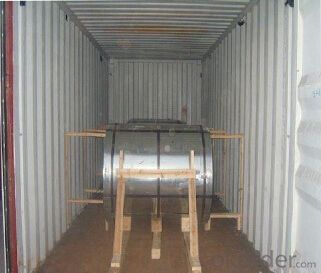
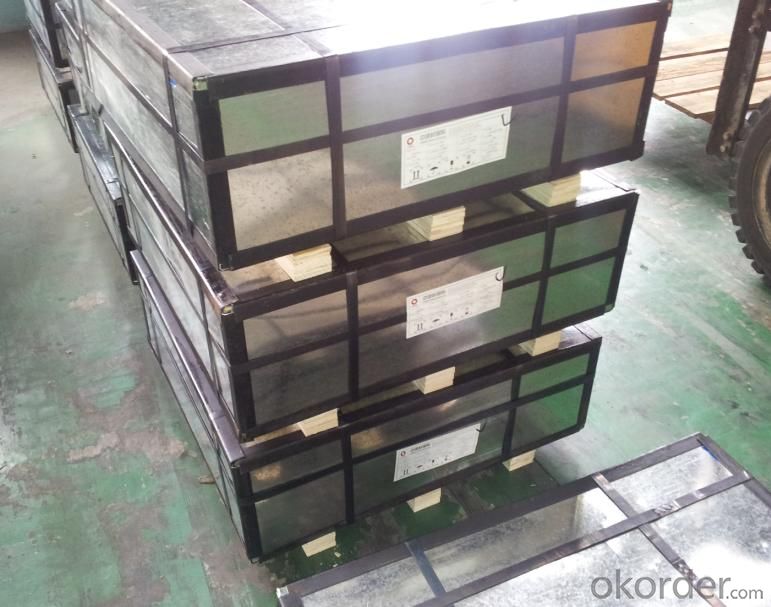
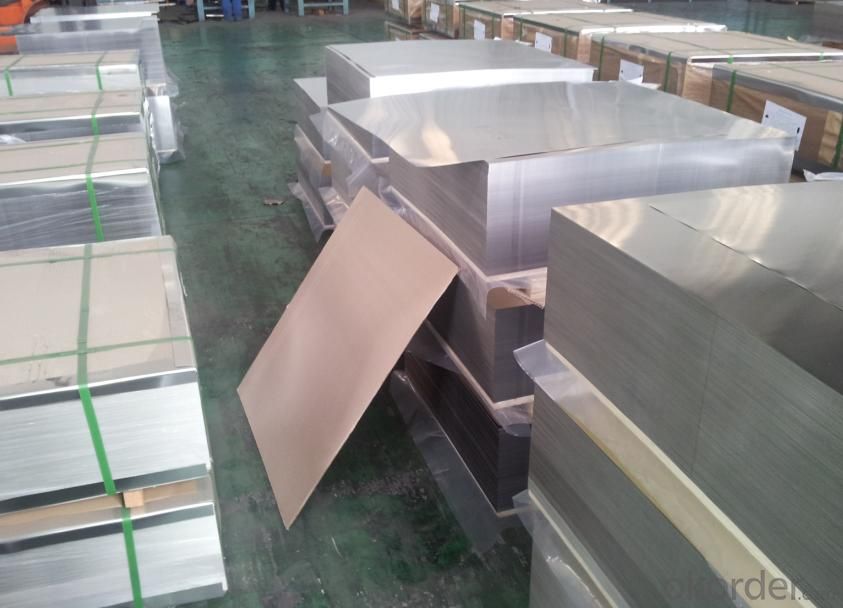
Sandard Seaworth Packing(wooden packing with water proof paper)

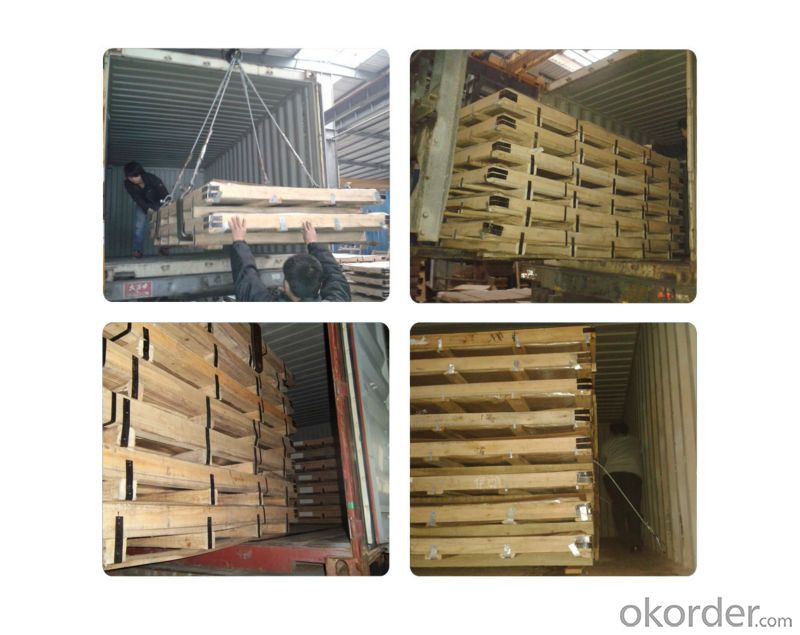
FAQ:
1. What's the quality?
very fine
2. How long get reply?
within 24 hours
If you have any question about stainless steel sheets,donot forget to sending the email to Us! You will get the competitive Price and have a very good experience about the Buying Process! CNBM International Corporation is always your trustful friend!
- Q: The difference between 304J1 stainless steel plate and 304 stainless steel plate
- 304J1 is a copper containing material of 304. It is mainly used in deep processing and also belongs to the series of nickel. By the Japanese on the basis of the successful development of American Standard 304.
- Q: Can stainless steel sheets be used for elevator mirror panels?
- Yes, stainless steel sheets can be used for elevator mirror panels. Stainless steel is a durable and corrosion-resistant material that is commonly used in the construction of elevator interiors. Additionally, stainless steel can be polished to a high shine, making it suitable for mirror panels in elevators.
- Q: How do you remove oil stains from stainless steel sheets?
- To remove oil stains from stainless steel sheets, you can follow these steps: 1. Start by wiping the stained area with a clean cloth or paper towel to remove any excess oil or grease. 2. Mix a mild dish soap with warm water in a bowl or bucket. Dip a soft sponge or cloth into the soapy solution and gently scrub the stained area in circular motions. 3. For tougher stains, you can use a non-abrasive cleaner specifically designed for stainless steel. Apply a small amount of the cleaner to the stained area and use a soft cloth to rub it in. Be sure to follow the manufacturer's instructions for the cleaner. 4. Rinse the area thoroughly with warm water to remove any soap residue. 5. To further restore the shine and remove any remaining stains, you can create a paste using baking soda and water. Apply the paste to the stained area and let it sit for a few minutes. Then, scrub gently with a soft cloth or sponge. Rinse with warm water and dry with a clean towel. 6. To prevent future stains, consider using a stainless steel cleaner or polish. These products can help maintain the shine and make it easier to clean any spills or stains that may occur. Remember to always test any cleaning product or method on a small, inconspicuous area of the stainless steel sheet before applying it to the entire surface. Additionally, avoid using abrasive materials or scrub brushes with harsh bristles as they can scratch the stainless steel.
- Q: Are stainless steel sheets suitable for outdoor signage?
- Stainless steel sheets are indeed appropriate for outdoor signage. This material is widely favored for outdoor uses because of its robustness, ability to resist corrosion, and pleasing appearance. It possesses exceptional resistance to rust and can endure harsh weather conditions, making it particularly suitable for outdoor signage that will be exposed to rain, sunlight, and extreme temperatures. Moreover, stainless steel sheets can be easily personalized and fabricated to craft diverse designs and forms, rendering them a versatile choice for outdoor signage. Furthermore, its sleek and polished finish adds a professional and contemporary touch to any signage. In summary, stainless steel sheets are a dependable and enduring alternative for outdoor signage.
- Q: What are the different types of stainless steel sheet finishes for pharmaceutical applications?
- There are several different types of stainless steel sheet finishes that are commonly used in pharmaceutical applications. These finishes are designed to provide specific characteristics and properties to meet the requirements of pharmaceutical manufacturing processes. 1. No.1 Finish: This is the most basic stainless steel sheet finish, characterized by a dull, rough surface. It is typically used for applications where appearance is not a concern, but corrosion resistance and durability are important. 2. No.2D Finish: Also known as a "dull" finish, this type of finish has a slightly smoother surface than No.1 finish. It is achieved by cold rolling the stainless steel sheet and then annealing it. No.2D finish is commonly used in pharmaceutical applications where a smooth surface is required for easy cleaning and maintenance. 3. No.2B Finish: This is one of the most popular finishes for stainless steel sheets in pharmaceutical applications. It has a smooth, reflective surface that is achieved by cold rolling, annealing, and then pickling or passivating the stainless steel sheet. No.2B finish provides excellent corrosion resistance and is easy to clean, making it suitable for pharmaceutical environments. 4. No.3 Finish: This type of finish has a semi-reflective surface with a slightly coarse texture. It is achieved by using a fine abrasive material to polish the stainless steel sheet. No.3 finish is commonly used in pharmaceutical applications where a decorative appearance is desired, while still maintaining good corrosion resistance. 5. No.4 Finish: This is a popular finish for stainless steel sheets in pharmaceutical applications that require both a decorative appearance and good corrosion resistance. It has a brushed appearance, achieved by using a fine abrasive material in a linear motion. No.4 finish also provides a smooth surface that is easy to clean. 6. No.6 Finish: This type of finish is achieved by using a fine abrasive material in a circular motion, resulting in a satin-like appearance. No.6 finish is commonly used in pharmaceutical applications where a high-quality aesthetic finish is desired, such as for equipment that is visible to patients or visitors. In conclusion, the different types of stainless steel sheet finishes for pharmaceutical applications offer a range of characteristics and properties to meet the specific needs of the industry. Whether it is for corrosion resistance, easy cleaning, or a decorative appearance, there is a suitable finish available for every pharmaceutical application.
- Q: What are the fire resistance properties of stainless steel sheets?
- Stainless steel sheets have excellent fire resistance properties due to their high melting point and low thermal conductivity. They can withstand high temperatures without losing their structural integrity, making them suitable for use in fire-resistant applications.
- Q: Can stainless steel sheets be used for hygienic applications?
- Yes, stainless steel sheets can be used for hygienic applications. Stainless steel is known for its non-porous surface, resistance to corrosion, and ability to withstand high temperatures, making it ideal for industries such as food processing, pharmaceuticals, and healthcare where cleanliness and hygiene are essential. The smooth surface of stainless steel sheets prevents the growth of bacteria, making it easy to clean and maintain a hygienic environment.
- Q: What is called anti fingerprint stainless steel sheet?
- Is the surface sealing oil slightly. After sealing the oil, the surface is covered with a thin layer of ink, and the fingerprints are not easy to stick on. So also called anti fingerprint stainless steel.
- Q: How do you determine the weight of a stainless steel sheet?
- To determine the weight of a stainless steel sheet, you need to know its dimensions (length, width, and thickness) and the density of stainless steel. By multiplying the volume of the sheet (length x width x thickness) with the density, you can calculate its weight.
- Q: What are the different types of stainless steel sheet textures available?
- There are several types of stainless steel sheet textures available, including brushed, mirror, embossed, and patterned.
Send your message to us
Stainless Steel Plate 310S with No.4 Surface Treatment
- Loading Port:
- Shanghai
- Payment Terms:
- TT OR LC
- Min Order Qty:
- 500 m.t.
- Supply Capability:
- 5000000 m.t./month
OKorder Service Pledge
OKorder Financial Service
Similar products
Hot products
Hot Searches
Related keywords
